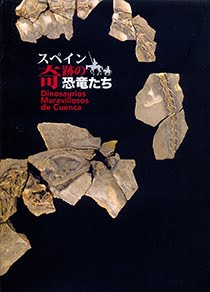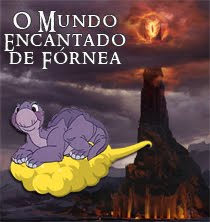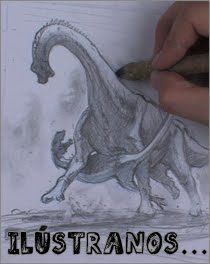Continuamos con las crónicas de las recientemente celebradas VII Jornadas de Paleontología de Dinosaurios y su Entorno en Salas de los Infantes (Burgos). En esta ocasión, os traemos las conclusiones obtenidas acerca del plan corporal de los saurópodos, derivadas del montaje del esqueleto virtual de Spinophorosaurus nigerensis en un trabajo presentado por Daniel Vidal:
Spinophorosaurus nigerensis (Remes et al., 2009) from the Middle Jurassic of Niger is a basal eusauropod. Originally thought to be a very primitive sauropod, it is now considered to share some similarities with mamenchisaurids (Mocho et al., 2013). Spinophorosaurus is mainly known from an almost complete specimen found articulated. A second specimen from the same locality, found a few meters away, preserves some elements the holotype does not, such as some skull elements, a humerus, the interclavicle, and posteriormost dorsal ribs.Virtual dinosaur models have proven to be an useful tool to study functional morphology by creating virtual skeletons from original fossils 3D models (Mallison, 2010a, 2010b). Virtual skeletons are becoming more common in analyses of the functional evolution of the long neck and tail sauropod bauplan (Bates et al., 2016).Spinophorosaurus holotype is an almost complete and well‐preserved articulated skeleton from a single individual. This makes it a good candidate for studying the full‐body anatomy of basal eusaudopods. The bones of the Spinophorosaurus holotype were scanned with photogrammetry. This technique uses slightly overlapped pictures taken so that the whole surface of each bone is covered to develop a 3D mesh (Mallison & Wings, 2014). The resulting virtual bones are very accurate to the original fossils, with a scaling error smaller than 0.1 mm. The virtual bones were then manually articulated in Autodesk 3D Studio Max in osteological neutral pose by bone pairs following Carpenter et al. (1994), Stevens & Parrish (1999) and Mallison (2010a).The virtual skeleton measures 11.7 meters from head to tail, and it is one of the first digital models of a sauropod dinosaur made from scans coming from a single, highly complete individual. Its body proportions, interestingly, are a little different from previous 2D skeletal reconstructions made from tracing bone outlines from pictures of the fossils and using measurements of the bones. The torso of Spinophorosaurus is shorter and the neck is longer than in previous reconstructions. The presacral vertebrae form a 30o angle with the horizontal in osteological neutral pose, resulting in much taller shoulders than in previous reconstructions.This body plan with antero‐dorsally projected series of presacral vertebrae resulting in tall shoulders differs from the previous reconstructions in other non‐neosauropods, in which the presacral column was reconstructed as sub‐horizontal with low shoulders (i.e. Patagosaurus Bonaparte, 1986; Barapasaurus Bandyopadhyay et al., 2010; Shunosaurus Zhang, 1988 or Omeisaurus He et al., 1988). The herein proposed body plan for Spinophorosaurus is more similar to the reconstructions of Atlasaurus (Monbaron et al., 1999) or Mamenchisaurus youngi (Paul, 2007).All in all, the virtual skeleton of Spinophorosaurus shows a body plan with a relative inclination toward vertical lengthening, as evidenced by many skeletal traits: i) moderately elongated cervical vertebrae, ii) antero‐dorsally inclined presacral column, iii) elongate scapulo‐ coracoid and iv) moderately elongate humerus. Although this body plan seems to fit with a high browsing model for Spinophorosaurus, further range of motion, myological, biomechanical, phylogenetic and paleoecological analyses will have to be performed to find better evidence support of that model.
-----
Más información:
- Referencia: Vidal, D., Aberasturi, A., Mocho, P., Ortega, F., Sanz, J.L. 2016. Assembling a virtual Spinophorosaurus: what can it teach us about the evolution of Eusauropoda?. In: Torcida Fernández-Baldor, F., Canudo, J.I., Huerta, P., Pereda, X. (eds.) Abstracts book of the VII International Symposium about Dinosaurs Palaeontology and their Environment, 95-96.
- Imagen: Daniel Vidal durante la charla.




























































- Síguenos en Twitter
- "Síguenos en Facebook
- RSS
Contacto